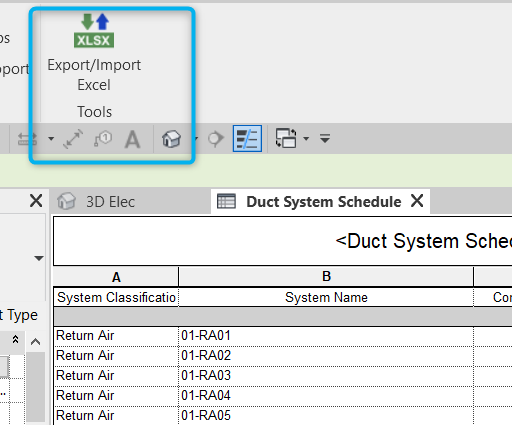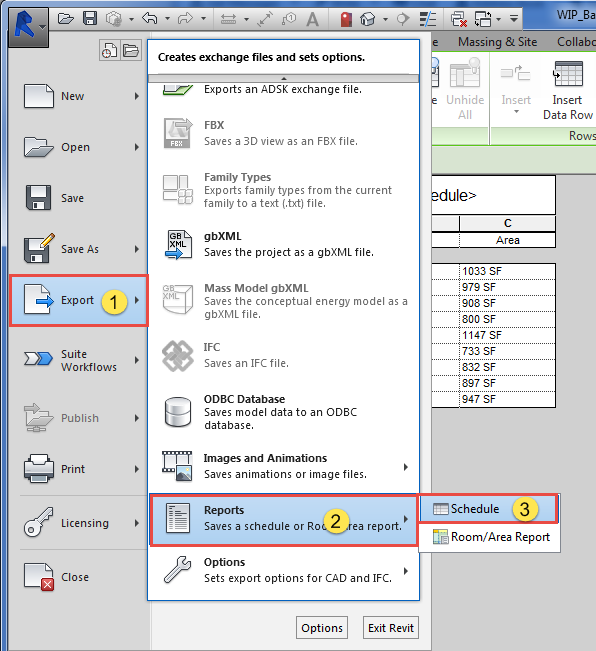Revit Excel Integration Demystified: Streamlining Workflows for Improved Job Coordination
Look no additionally, since Revit Excel Assimilation is right here to debunk the process and enhance your tasks. In this article, we will assist you with the importance of Revit Excel Assimilation, reveal you exactly how to streamline workflows, and supply ideal practices for successful combination.
The Importance of Revit Excel Assimilation
You need to comprehend the value of Revit Excel integration to efficiently streamline your process and boost project sychronisation. The assimilation of Revit, an effective structure info modeling (BIM) software, with Excel, an extensively utilized spread sheet program, provides countless benefits for designers, engineers, and construction professionals.

By incorporating Revit with Excel, you can remove hand-operated information entry and decrease the threat of mistakes. This not only saves time but also ensures accuracy in your job documentation. You can update data in Excel, and it will automatically update in Revit, keeping consistency throughout your project.
Moreover, Revit Excel combination boosts task control by making it possible for reliable partnership among staff member. With information integrated between Revit and Excel, everyone can access one of the most current info and interact flawlessly. This advertises smoother communication, lowers disputes, and enhances overall task effectiveness.
How to Simplify Workflows With Revit Excel Assimilation
Enhance your process by flawlessly linking Revit and Excel to streamline your operations. By integrating these 2 effective tools, you can boost project coordination and boost efficiency in your job. With Revit Excel combination, you can conveniently transfer information between the two systems, permitting smooth interaction and collaboration.

One more benefit of Revit Excel combination is the ability to produce personalized records and analyze data extra efficiently. With Excel's durable attributes, you can perform sophisticated estimations, create charts and graphs, and generate extensive records based upon the information from your Revit models. This allows you to get beneficial understandings and make educated choices throughout the task.
Enhancing Project Coordination With Revit Excel Combination
By effortlessly attaching your layout software with powerful data analysis tools, you can significantly improve the sychronisation of your jobs. Revit Excel assimilation permits you to simplify your operations and boost task control by removing hand-operated information access and lowering mistakes. With this assimilation, you can quickly move data between Revit and Excel, guaranteeing that all project information depends on day and exact.
Among the crucial benefits of Revit Excel integration is the ability to import and export data in between the two software application perfectly. This means that you can easily import existing task information from Excel into Revit, saving you effort and time in coming back info. You can export job data from Revit to Excel, permitting you to execute sophisticated analysis and estimations utilizing the powerful attributes of Excel.
Moreover, Revit Excel integration allows you to produce vibrant web links between the 2 software application (revit tools). This implies that any kind of modifications made in Revit will automatically upgrade in Excel, and vice versa. This makes certain that all job stakeholders are dealing with one of the most up-to-date info, improving job coordination and minimizing the risk of mistakes
Overcoming Difficulties in Revit Excel Integration
When getting rid of challenges in the assimilation of Revit and Excel, it is essential to make certain seamless information transfer and minimize errors. One usual difficulty is the compatibility of data layouts between Revit and Excel. To tackle this, you can utilize plugins or add-ins that help with the conversion of information from one format to one more. These devices assist keep the integrity of the information during the transfer process.
Another difficulty is the absence of synchronization between Revit and Excel. It's important to develop a clear workflow that ensures both platforms are updated in real-time. This can be accomplished by making use of cloud-based collaboration tools or establishing a system for routine information syncing.
Managing large datasets can likewise be problematic. Revit and Excel have various capacities when it pertains to handling huge amounts of data. To overcome this challenge, you can divide the data into smaller, convenient portions or use information filtering techniques to concentrate on particular locations of passion.
Last but not least, human mistake can cause inconsistencies between Revit and Excel data. It is essential to train employee on the assimilation procedure and establish quality assurance measures to catch any kind of mistakes. Routine audits and cross-checks can help identify and fix any kind of incongruities.
Finest Practices for Successful Revit Excel Integration
To ensure effective combination of Revit and Excel, it is necessary to follow some ideal methods that will aid enhance your process and minimize mistakes. revit add ins Most importantly, always begin by creating a clear and well organized folder structure for your task data. When needed, this will make it easier to find and update the needed files. Furthermore, when linking Excel information into Revit, make sure that the data is tidy and free from any type of format issues that might cause errors. Usage consistent calling conventions for your Excel worksheets and columns to prevent complication.
Another essential method is to routinely update your Excel data in Revit. Make it a practice to evaluate and update the data at routine intervals, particularly when modifications are made to the task.

Final Thought
So, there you have it - revit Excel assimilation does not need to be a daunting task. By streamlining your workflows with this effective mix, you can improve job sychronisation and achieve greater performance. Bear in mind to get rid of any type of difficulties that may arise and adhere to finest methods for successful assimilation. With revit Excel assimilation demystified, you'll be well on your way to making the most of the potential of these devices and taking your jobs to new elevations.
You can export your Revit schedules to Excel, make adjustments or updates in Excel, and then import the upgraded information back into Revit with simply a few clicks. Revit Excel assimilation allows you to simplify your process and boost job coordination by getting rid of hand-operated information entrance and reducing mistakes. With this integration, you can quickly transfer data in between Revit and Excel, making certain that all project details is up to date and precise.
You can export job information from Revit to Excel, enabling you to execute sophisticated evaluation and calculations utilizing the effective functions of Excel.
In addition, when linking Excel data right into Revit, ensure that the data is tidy and totally free from any format concerns that could trigger mistakes.